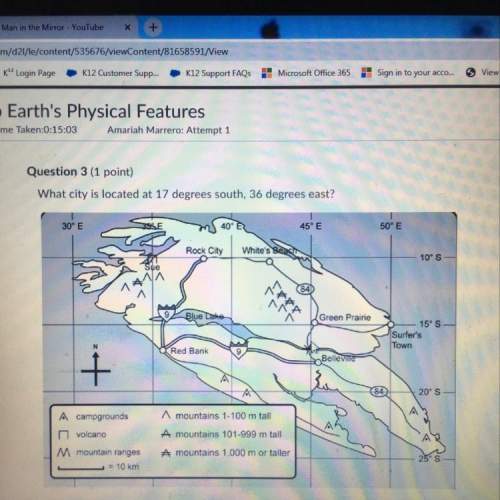
Chemistry, 01.07.2019 04:00 stupidsmoke4272
1.calculate the kelvin temperatures of the water and record your answers in the data table. 2.find the change in the volume of air in the flask from your data and record in data table. 3.use the equation v1 / t1 = v2 / t2 to calculate the expected volume of air when cooled in tap water. 4.how do the expected final volume and the actual final volume compare? 5.what is the significance of elevating or lowering the flask until the water level in the flask is even with the water level in the beaker or container? 6.construct a graph of the data. plot the volume of the gas at room temperature in tap water and in ice water on the y axis. plot the kelvin temperature on the x-axis. print out graph paper for your plot. (click here for graph paper.) 7.extend the plotted line downward until it crosses the temperature axis. this process of extending a graph beyond the experimental data is called extrapolation. 8.at which temperature is the line predicted to cross the x-axis? 9.at which temperature did the line actually cross the x-axis? 10.account for any deviation betweeen the predicted temperature line extrapolation and the actual line extrapolation. 11.real world chemistry - explain why bottled gas containers are equipped with a relief valve?

Answers: 1


Another question on Chemistry

Chemistry, 22.06.2019 06:30
Design techniques and materials that reduce the negative environmental impact of a structure are referred to as
Answers: 2

Chemistry, 22.06.2019 12:00
A5.000 g sample of niso4 h2o decomposed to give 2.755 g of anhydrous niso4. what is the formula of the hydrate? what is the full chemical name for the hydrate? what is the molar mass of the hydrate? niso4•_h2o what is the mass % of water in the hydrate?
Answers: 1

Chemistry, 22.06.2019 15:30
Count the number of each type of atom in the equation below, and then balance the equation. write in the numbers of atoms and coefficients. add a 1 if there should be no coefficient. cs2(l) + o2(g) → co2(g) + so2(g) c [ ] s [ ] o > c [ ] s [ ] o [ ] cs2(l) + [ ] o2(g) > [ ] co2(g) + [ ] so2(g)
Answers: 3

Chemistry, 23.06.2019 00:40
To prevent the presence of air, noble gases are placed over highly reactive chemicals to act as inert "blanketing" gases. a chemical engineer places a mixture of noble gases consisting of 4.37 g of he, 13.36 g of ne, and 36.65 g of kr in a piston-cylinder assembly at stp. calculate the partial pressure in torr of kr.
Answers: 1
You know the right answer?
1.calculate the kelvin temperatures of the water and record your answers in the data table. 2.find t...
Questions

English, 23.12.2019 18:31

Business, 23.12.2019 18:31



Geography, 23.12.2019 18:31


History, 23.12.2019 18:31



Mathematics, 23.12.2019 18:31

English, 23.12.2019 18:31


Computers and Technology, 23.12.2019 18:31

Health, 23.12.2019 18:31

Computers and Technology, 23.12.2019 18:31

Biology, 23.12.2019 18:31

English, 23.12.2019 18:31


Mathematics, 23.12.2019 18:31

Social Studies, 23.12.2019 18:31




